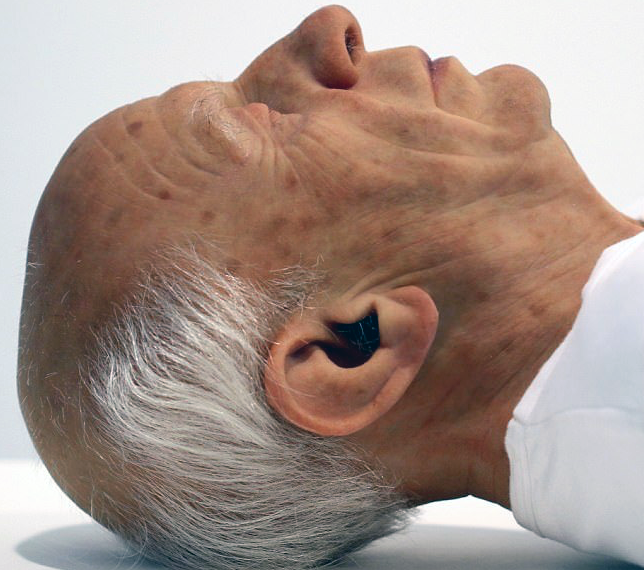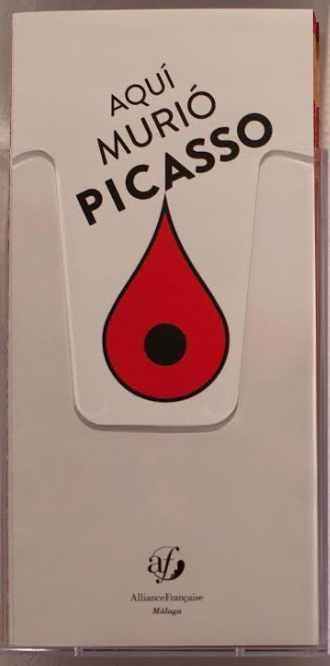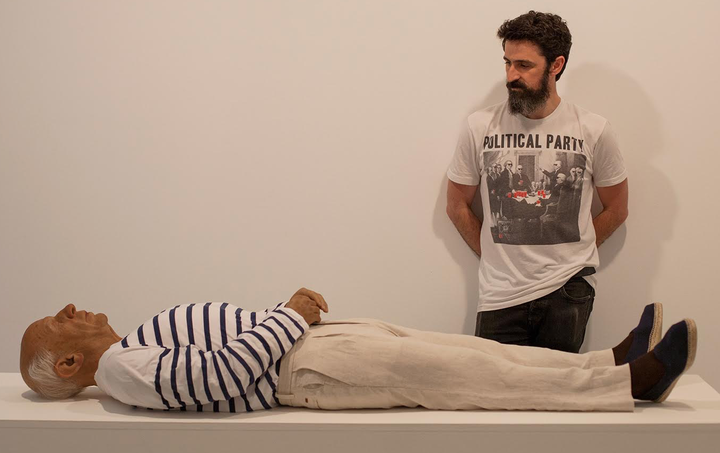
Will Picasso ever die?
That’s the question I hear in my mind when I learn about Eugenio Merino’s latest exhibition at the Alliance Française in Málaga, Spain.
Running till July 28th, the exhibition—Aquí murió Picasso [Picasso Died Here] (2017)—consists of a single installation, a life-like “corpse” of Pablo Picasso on a slab, with a marble plaque underneath.

Visitors are invited to take a “selfie” with the dead artist that won’t die. The “official” brochure is part of the branding experience.

As with all of Merino’s art, there is a principle of protest at work here.
Merino tells me that this exhibit is to bring attention to how cultural icons like Picasso are used to gentrify Málaga. As tourism brings more wealth and rising property values into the center of the city, normal citizens are displaced, forced to move to the outskirts of town, leaving the center to the developers, speculators and profit-making enterprises. Merino is right to protest this dark side of tourism and development.
The birth of this tourist-driven city development strategy can be traced to Frank Gehry’s museum in Bilbao. And ironically, it was my friend Philip Kotler—the “father of modern marketing”—who had the idea for building the Bilbao museum. He was invited to speak in Bilbao about their challenge of attracting more visitors, and told them: “You have a nice city but no Eiffel Tower.” The rest is history. City after city ended up using art to drive tourism and development, to the detriment of the poor. (Disclosure: Phil and I are working on a project to save capitalism from itself.)
To me the problem is not the museums. Rather, it is how the wealth created by such gentrification is funneled into the pockets of private developers. Instead of using the money to benefit the local community, the wealth created by art and architecture is used to enrich speculators, not citizens. There are ways to address this challenge. Universal Basic Income, perhaps?
Passion Investments: Art as an Asset
There is another irony here that is not lost on anyone. Picasso is a one-percenter. He is an investment product competing with all living artists.
Deloitte estimates:
Ultra High Net Worth Individuals (UHNWls) and High Net Worth Individuals (HNWls) have art holdings in the range of US$2.8 trillion. The total wealth of UHNWls and HNWls was estimated to be US$39 triion in 2009, passion investments are estimated to comprise approximately 33% of HNWls' and UH NWls' overall holdings and in 2009 art holdings represented 22% of HNWls' passion investment. Assuming that HNWls have allocated 5% of their wealth to art and UHNWls have allocated 10-15% to art, you end up with a market size of around US$1.5 trillion held by private individuals.

For me, this is the real protest.
Dead artists, including poor Picasso, are investment vehicles for the rich. If you care about art at all, don’t touch Picasso.
Support your local, living artist instead. Go direct. Avoid the moneylenders in the temple.
And read your Ben Davis.
